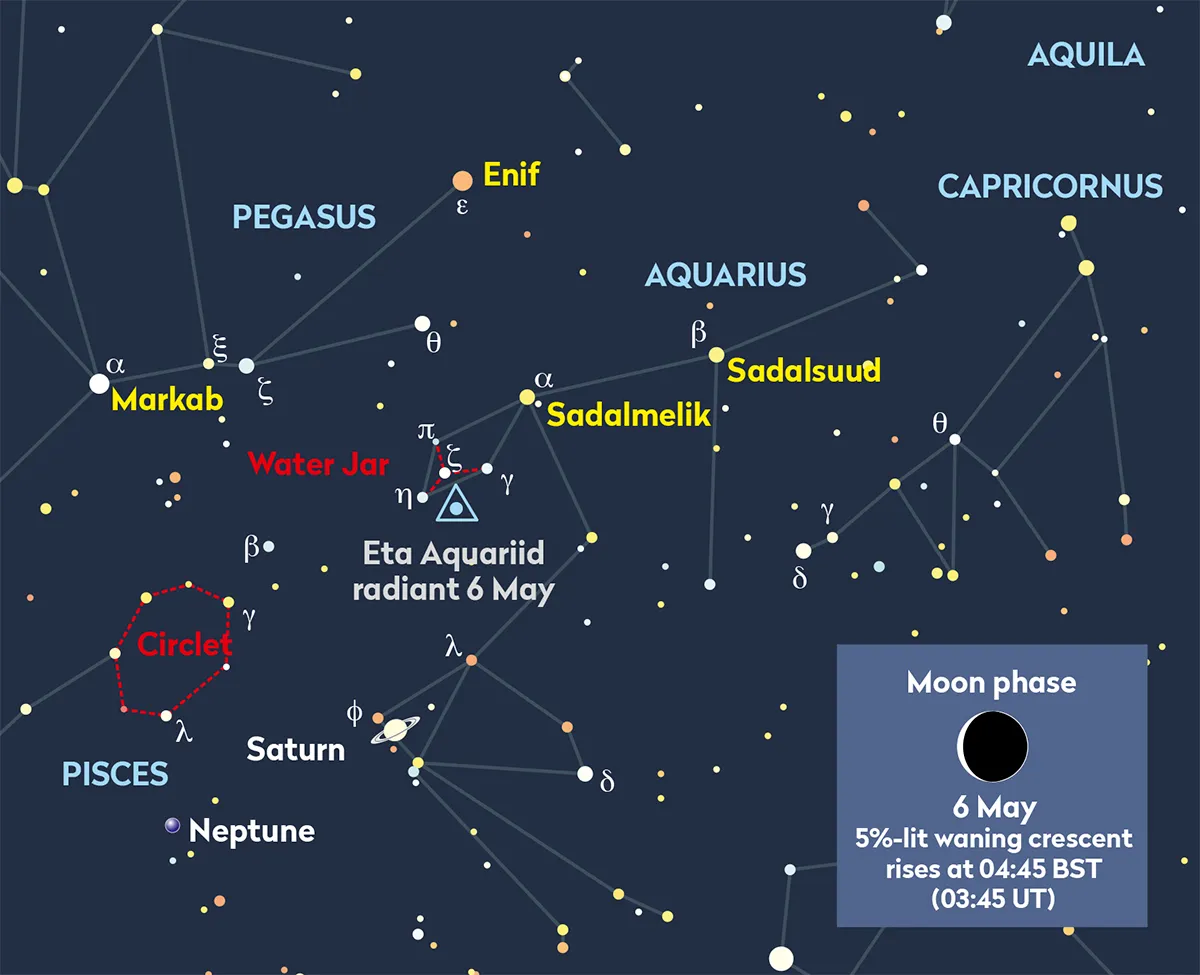The Eta Aquariid meteor shower peaks this weekend, and one tech company is asking owners of its video doorbell devices to check their footage to see if they've captured a meteor on camera.
Video doorbell company Ring has announced it's teaming up with the UK Fireball Alliance to ask those with a Ring device to check their footage for meteors and, potentially, fireballs.
The campaign follows the capture of a bright shooting star by a couple from Warwick via their Ring device.
Eta Aquariid meteor shower explained
The Eta Aquariid is one of many annual meteor showers that occur throughout the year.
These are caused as Earth orbits the Sun and passes through streams of debris left behind by comets and, sometimes, asteroids.
Small grains of debris enter Earth's atmosphere and burn up, causing meteors or 'shooting stars' to appear in the sky.
A named meteor shower always occurs at the same time and in the same part of the sky every year.
Each meteor shower is named after the region of sky from which meteors appear to emanate, known as the 'radiant'.

The Eta Aquariid meteor shower is so-called because meteors appear to originate in a region of the sky near star Eta Aquari.
The Eta Aquariids are by no means the most active or spectacular meteor shower, but this year the full Moon will be out of the way during peak activity, meaning there's a better chance of seeing a meteor.
Or, indeed, capturing it on your video doorbell device.
Find out more via our guide to the Eta Aquariid meteor shower, and use our star chart below to locate the shower's radiant.
Read our guide to meteor showers to find out when the next one is occurring and how to observe one.

The doorbell campaign
The UK Fireball Alliance and Ring say they are providing 50 devices across the UK in the hope that users will capture meteors in the sky.
Devices have been made available to those in the best areas to view a meteor shower.
"Travelling at speeds of up to 70 km per second, meteors travel faster than any other objects in the sky," says Charlotte Bays, Secretary at the UKFAII.
"As a result, shooting stars are usually gone within a few seconds. That’s why meteor showers like the Eta Aquariid are so special, offering lucky stargazers a rare chance to see an amazing astronomical show."
From 9 April, those living in the top UK viewing areas for shooting stars can apply at www.ukfall.org.uk/get-involved/ring.
Best areas in the UK to see meteors according to UK Fireball Alliance:
- Exmoor
- Northumberland
- Scottish Highlands
- South Downs
- North York Moors
- Yorkshire Dales
- Cranborne Chase
- Bodmin Moor & West Penwith in Cornwall
If you've captured a video of a meteor, send it to us via contactus@skyatnightmagazine.com
